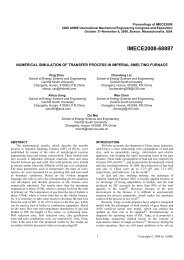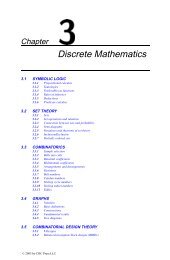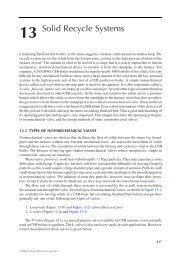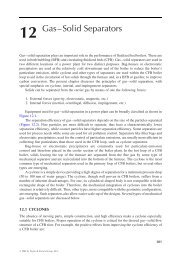Chapter 4: Geometry
Chapter 4: Geometry
Chapter 4: Geometry
You also want an ePaper? Increase the reach of your titles
YUMPU automatically turns print PDFs into web optimized ePapers that Google loves.
FIGURE 4.29<br />
The Bernoulli or logarithmic spiral (left), the Archimedes or linear spiral (middle), and the<br />
Cornu spiral (right).<br />
<br />
<br />
¾<br />
¾<br />
with the logarithmic spiral, which spirals down to the origin without reaching it. The<br />
Cornu spiral or clothoid (Figure 4.29, right), important in optics and engineering,<br />
has the following parametric representation in Cartesian coordinates:<br />
´Øµ <br />
Ø<br />
¼<br />
Ó×´ ½<br />
¾ ×¾ µ ×<br />
Ý Ë´Øµ <br />
Ø<br />
¼<br />
×Ò´ ½<br />
¾ ×¾ µ × (4.7.8)<br />
( and Ë are the so-called Fresnel integrals; see page 547.) A curve parameterized<br />
by arc length and such that the radius of curvature is inversely proportional to the<br />
parameter at each point is a Cornu spiral (compare to the Bernoulli spiral).<br />
4.7.5 THE PEANO CURVE AND FRACTAL CURVES<br />
There are curves (in the sense of continuous maps from the real line to the plane)<br />
that completely cover a two-dimensional region of the plane. We give a construction<br />
of such a Peano curve, adapted from David Hilbert’s example. The construction<br />
is inductive and is based on replacement rules. We consider building blocks of six<br />
shapes:<br />
, the length of the straight segments being twice<br />
the radius of the curved ones. A sequence of these patterns, end-to-end, represents a<br />
curve, if we disregard the gray and black half-disks. The replacement rules are the<br />
following:<br />
© 2003 by CRC Press LLC










